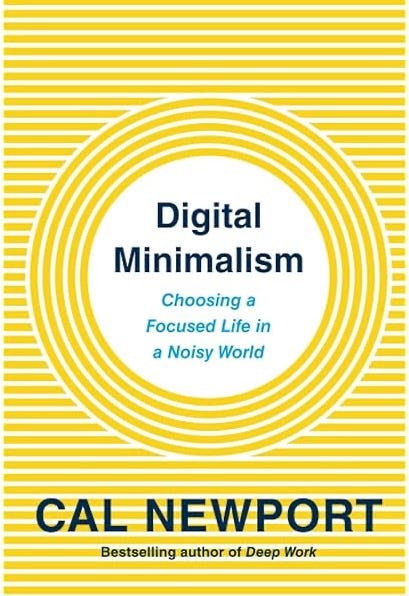Digital minimalism offers a profound solution to the pervasive issue of digital addiction. The philosophy encourages individuals to optimize their technology use to enhance their lives while minimizing distractions, inefficiencies, and the mental toll of excessive screen time.
Key Ideas
1. The Rise of Digital Addiction: Technology, once designed for simple purposes, has evolved into a source of constant distraction and addiction. Social media platforms, once innocuous, have been engineered to trigger compulsive behaviors, much like addictive substances.
2. Embracing Digital Minimalism: Cal Newport proposes digital minimalism as a way to counteract the negative impact of tech giants. The approach goes beyond simple fixes, advocating for a mindful and purpose-driven use of technology. It calls for the removal of non-essential digital tools and optimizing the essential ones for greater value and efficiency.
3. Principles of Digital Minimalism: Three principles guide this philosophy:
• Clutter is costly: Evaluate whether digital tools add value or drain time and attention.
• Optimization is essential: Avoid overloading with digital content and optimize tools for efficiency.
• Intentionality is satisfying: Adopt technology that aligns with your values and goals.
4. Digital Declutter: Begin with a 30-day break from all non-essential technology. This period allows reflection, self-discovery, and an opportunity to identify what truly adds value. After the declutter, reintroduce only those technologies that support your core values and objectives.
5. Embracing Solitude and Sustainable Change: Solitude is vital for reflection and emotional processing. Digital minimalism promotes taking time away from screens to nurture mental clarity, which is essential for maintaining balance in a tech-saturated world.
6. Prioritizing Genuine Human Interaction: Shallow digital interactions, like “liking” posts, replace meaningful human connection. Instead, focus on real conversations, whether in person or over the phone, to foster deeper relationships.
7. Enhancing Leisure and Reducing Low-Quality Activities: Focus on high-quality leisure activities that bring intrinsic satisfaction, like physical hobbies and challenging tasks. Digital minimalism helps create space for these enriching experiences while minimizing the lure of low-quality distractions.
8. The Attention Resistance Movement: This movement aims to resist the attention economy designed by tech companies. Members use strategies like downgrading to simpler phones or using blocking software to reduce digital distractions, reclaiming their attention.
Final Takeaways
• Start with a digital declutter to reset your habits and identify what truly matters.
• Embrace solitude and quality leisure to restore balance and mental well-being.
• Prioritize genuine human interaction to strengthen relationships.
• Join the Attention Resistance by reducing reliance on addictive technologies and regaining control over your digital life.
By adopting digital minimalism, individuals can cultivate a more intentional and fulfilling relationship with technology, leading to a healthier, more focused life.


